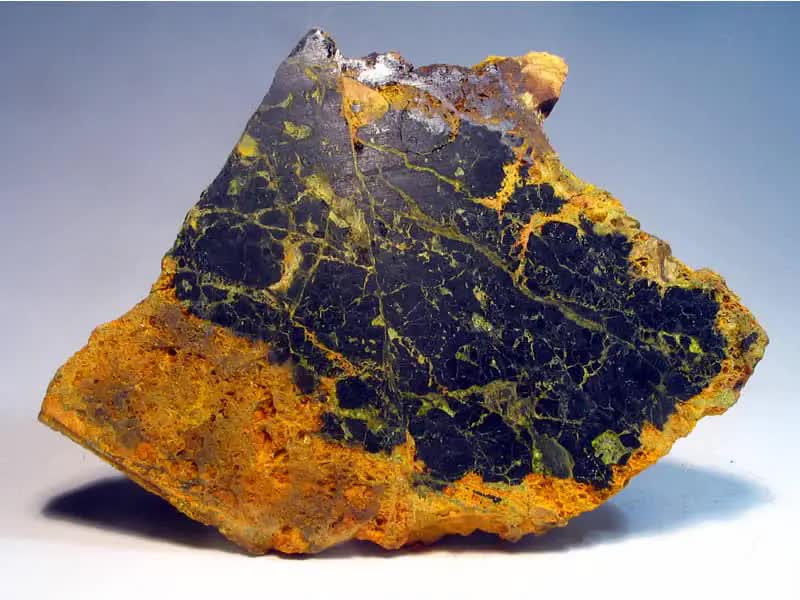China’s Largest Natural Uranium Project Produces Its First Barrel
Exactly one year after construction began, on July 12, 2025, China successfully produced its first barrel of natural uranium from the “National Uranium No.1” project in Ordos, Inner Mongolia Autonomous Region, as reported by the World Nuclear Association.
The China National Nuclear Corporation (CNNC) initiated the project on July 12, 2024. A year later, the first “fruit” emerged (see image below).

Image of China’s first barrel of natural uranium. Photo: CNNC
According to the World Nuclear Association’s information on China’s nuclear fuel cycle, China has set three key goals: (1) produce one-third of its uranium domestically, (2) acquire one-third through foreign equity in mines and joint ventures abroad, and (3) purchase one-third on the open market.
The production of this natural uranium barrel contributes to China’s first goal.
Natural uranium is the raw material for producing nuclear fuel. To be used in reactors, natural uranium typically undergoes enrichment to increase the concentration of U-235, one of its isotopes.
Enriched uranium is then used as fuel in nuclear reactors to generate electricity. Nuclear power is a carbon-free energy source, providing a significant portion of electricity in many countries.
As China’s largest natural uranium production facility by capacity, the “National Uranium No.1” project was built to the highest standards, showcasing technological advancements and environmental stewardship. It focuses on green, efficient, smart, and sustainable development.
Notably, the project set a new record for construction speed, completed in just one year. The successful production of the first uranium barrel marks China’s entry into a new era of green, safe, smart, and efficient uranium development.
The “National Uranium No.1” project is a significant milestone in implementing China’s third-generation uranium mining and processing technology, as stated by CNNC.
China’s Largest Project in 70 Years
The project employs in-situ CO2 and O2 recovery technology, also known as in-situ leaching, where uranium is extracted through a closed-loop uranium solution circulation without bringing ore to the surface for processing. This method is believed to conserve water, reduce gas emissions, and minimize solid waste, while significantly lowering carbon emissions.
“As the largest natural uranium production project in China’s nuclear and mining industries over the past 70 years, the successful production of the first uranium barrel signifies China’s uranium resource development officially entering a new era: Green, safe, smart, and efficient”, stated CNNC.

A typical reactor can hold about 100 tons of enriched uranium (approximately 113 tons of uranium dioxide). Photo: Nuclear Power
Upon completion, the project will provide a robust resource base for national energy security and nuclear industry development, significantly enhancing the international competitiveness of China’s natural uranium industry.
CNNC noted that historically, China’s uranium mining focused on volcanic and granite deposits in the south. However, over the past two decades, exploration of sandstone uranium deposits in the north has achieved significant breakthroughs.
In 2023, China announced the top 10 uranium exploration results, predicting uranium reserves to exceed 2.8 million tons. The primary uranium sources are concentrated in northern sandstone deposits, with the Ordos Basin becoming the country’s largest uranium resource base.
“National Uranium No.1” Project Set to Expand Globally
The technology used in the National Uranium No.1 project will be “fully applied and promoted in the development of uranium resources in northern China’s basins, supporting the construction of new mining facilities and ensuring sufficient uranium resources for nuclear energy development” – CNNC stated.
In the future, National Uranium No.1 technology will “go global,” being promoted to uranium mines worldwide to ensure the safe and orderly development of global nuclear energy.
The World Nuclear Association reports that China currently operates 58 reactors, generating 56.93 Gigawatts of electricity. An additional 32 reactors under construction will add 34.2 Gigawatts of capacity, with dozens more in planning or proposal stages.
BIG Launches Representative Office in China
On September 26, 2025, in Mengzi City, Yunnan Province, China, Big Group Holdings Joint Stock Company (UPCoM: BIG) officially inaugurated the representative office of its subsidiary, Big Expo.
A Bumper Harvest: The Success Story of Lychee Exports
According to the latest figures from the Customs Department, Vietnam’s lychee exports are breaking records with a revenue of $80 million in the first seven months of this year, more than tripling the figures from the same period last year.










































